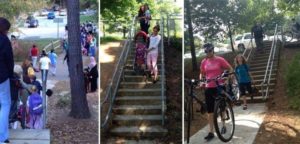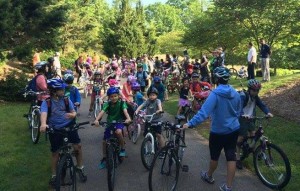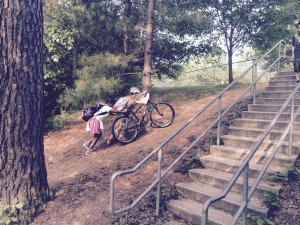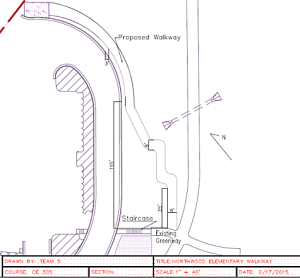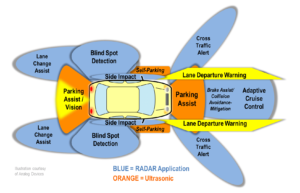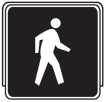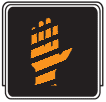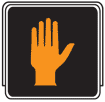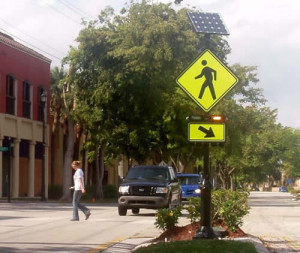BikeWalk NC has developed the following priority recommendations for the Study/Update on Bicycle Safety Laws to be conducted by NCDOT according to HB 232. These summary recommendations can be downloaded as a printer-friendly .pdf file. A detailed support document for these recommendations, discussing existing law and best bicycling practices, is also provided in .pdf format.
BikeWalk NC Recommendations on North Carolina Traffic Laws
7/20/2015
Abstract
North Carolina’s existing traffic laws are among the best in the nation in terms of their alignment with best bicycling practices (see attachment) and their support for bicyclists’ travel objectives. BikeWalk NC supports better public education and law enforcement to promote public understanding of and compliance with best operating practices for all vehicles. BikeWalk NC opposes law changes that would interfere with the exercise of defensive bicycle driving techniques and put such bicyclists at risk of citations. This paper presents BikeWalk NC’s recommendations for minor changes to state traffic laws to enhance support for best bicycling practices and safe passing maneuvers by motorists, and specifies some of the existing laws that we recommend be left unchanged.
1. Relax the Solid Centerline Rule
Recommendation: Modify § 20-150 (e) to allow drivers to cross a solid centerline when passing a slow moving bicyclist only when safe and done in compliance with restrictions § 20-150 (a), (b), (c), and (d).
Justification: Most rural roads are too narrow for motorists to pass bicyclists safely within the bicyclist’s lane; unsafe same-lane passing is the leading cause of same-direction car/bike collisions in daylight. Prudent motorists routinely cross solid centerlines to pass bicyclists safely where there is clear sight distance to do this in compliance with § 20-150 (a), (b), (c), and (d). Sight distance required for passing a bicyclist safely is usually much shorter than that required for passing a motor vehicle, but dashed centerline placement policies assume passing of motor vehicles traveling just under the maximum posted limit. Strict enforcement of the solid centerline passing prohibition is grossly misaligned with routine passing of bicyclists and puts police in conflict with prudent motorists. Passing restrictions in § 20-150 (a), (b), (c), and (d) must continue to be enforced and public education about safe passing is recommended. Several other states allow crossing a solid centerline to pass bicyclists. See in-depth article at http://iamtraffic.org/engineering/crossing-double-yellow-line/
2. Add a Rear Lamp Requirement
Recommendation: Modify § 20-129 (e) to require bicyclists to use a red rear lamp, either blinking or steady, in addition to the already-required white front headlamp, when bicycling at night.
Justification: Over half of fatal car-bike collisions occur in darkness, mostly involving unlighted bicyclists. Typical rear bicycle reflectors provide marginal or insufficient visibility in common nighttime traffic conditions such as high speed roads and where vehicles are turning. Red LED bicycle tail lamps provide vastly superior rear visibility, and are generally less expensive than bicycle headlamps, which will continue to be required.
3. Allow use of the Right Arm for Right Hand Signals
Recommendation: Modify § 20-154 (b) to allow optional use of the right arm to signal a right turn or other rightward movement. This would mirror the existing left hand signal, i.e.
Left turn – hand and arm horizontal, forefinger pointing.
Right turn – hand and arm pointed upward. Optionally, if operating a bicycle or motor-driven cycle, right hand and arm horizontal, forefinger pointing.
Justification: The right arm is more visible than the left arm to other road users who are most affected by a right turn or rightward movement, i.e. users to the right of the bicyclist. A bicyclist must turn their head and torso to look backward on their right side before moving rightward safely on the road; a left-armed hand signal interferes with this body movement, but a right-armed hand signal assists it. About half of US states allow bicyclists to use the right arm for signaling rightward movements.
4. Penalize Careless Driving
Recommendation: Complement the Class 2 misdemeanor of reckless driving (§ 20-140) with a lesser offense of driving without due care and attention, aka careless driving. This would apply to careless and/or inattentive driving of any vehicle (including a bicycle) in a manner that endangers or would be likely to endanger any person or property, but does not meet the definition of reckless driving. Assign elevated penalties for injuring or killing other persons while engaged in careless driving.
Justification: Inattentive and careless driving is a major safety concern for all road users, by some analyses contributing to the majority of vehicle crashes. However, the decision to act inattentively or carelessly on the roadway is rarely penalized, even when it directly results in a crash. Police or courts may believe that some careless behavior does not rise to the level of “willful or wanton disregard of the rights or safety of others” per the reckless driving statute or that they may be unable to prove intent. Several states such as Pennsylvania and Oregon define careless driving separately from reckless driving in order to provide police and the courts more options for addressing negligent behavior that contributes to the injury of innocent people. A careless driving law can meet many of the desired objectives of a “vulnerable road user law” except that it applies equally (and justly) when the victim of a carelessness-induced crash was inside a motor vehicle. The law would also apply equally when a careless bicyclist injures a pedestrian.
5. Preserve Non-Discriminatory Treatment of Bicyclists
Recommendation: Preserve bicyclists’ existing roadway rights equal to other drivers of vehicles; do not enact new bicycle-specific restrictions on bicyclists’ use of roadways or portions of roadways.
Justification: Bicyclists’ ability to access their destinations of choice require that they be allowed use of all roadways except fully controlled access highways which feature no driveways or at-grade crossings (i.e. freeways, which are the only public roads prohibited to non-motorized vehicles, via NCAC 19A.2E.0409). Bicyclists’ ability to maximize their safety requires that they be able to negotiate traffic with the same rights and using the same basic rules of movement that apply to all other vehicles including other non-motorized vehicles. Successful defensive bicycle driving without the threat of harassment by motor vehicle drivers or police officers requires that bicyclists continue to have use of a full marked travel lane, as permitted by NC law like any other driver, when they deem it advantageous. Existing NC traffic law treats bicyclists’ use of a marked travel lane the same as other drivers. (See attachment for details on defensive bicycle driving techniques in marked travel lanes.)
6. Do Not Make Bikeways Mandatory-Use
Recommendation: Preserve bicyclists’ existing right to use general purpose travel lanes regardless of the installation of a nearby bikeway such as a multi-use path or bike lane.
Justification: Experienced bicyclists often find general purpose travel lanes to be better designed, maintained, and utilized for their bicycling purposes than are designated bicycle facilities, which can be popular with novices. Bicyclists using designated bicycle facilities routinely encounter hazards including conflicts with turning and entering traffic, car doors that might open, pedestrians, poor sight lines/distances, inadequate maneuvering space, poor pavement, and debris. Knowledgeable bicyclists avoid bicycle facilities in favor of the general purpose travel lanes where they are concerned about the potential of such hazards. Bicyclists must also leave typical bicycle-specific facilities when preparing for a left turn, when passing other bicyclists, and to make groups more compact in length (such as when maximizing throughput at a traffic signal). Laws that restrict bicyclists’ use of general purpose travel lanes when a bikeway is present interfere with defensive bicycle driving practices, create friction between bicyclists and police, and have a chilling effect on bicycling. (See attachment for details on defensive bicycle driving techniques. See also http://bikeleague.org/content/bike-law-university-mandatory-use-separated-facilities for the League of American Bicyclists’ position on mandatory use laws. )
